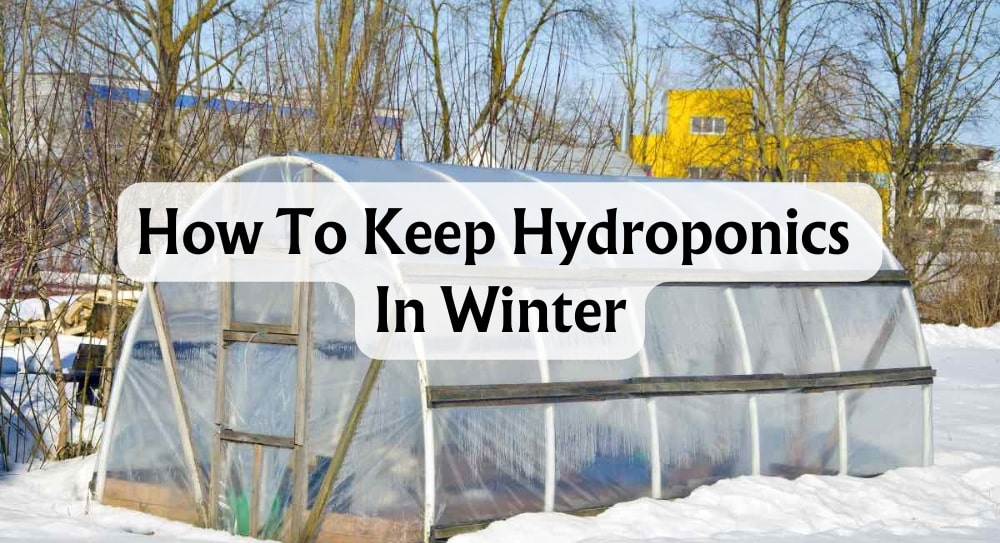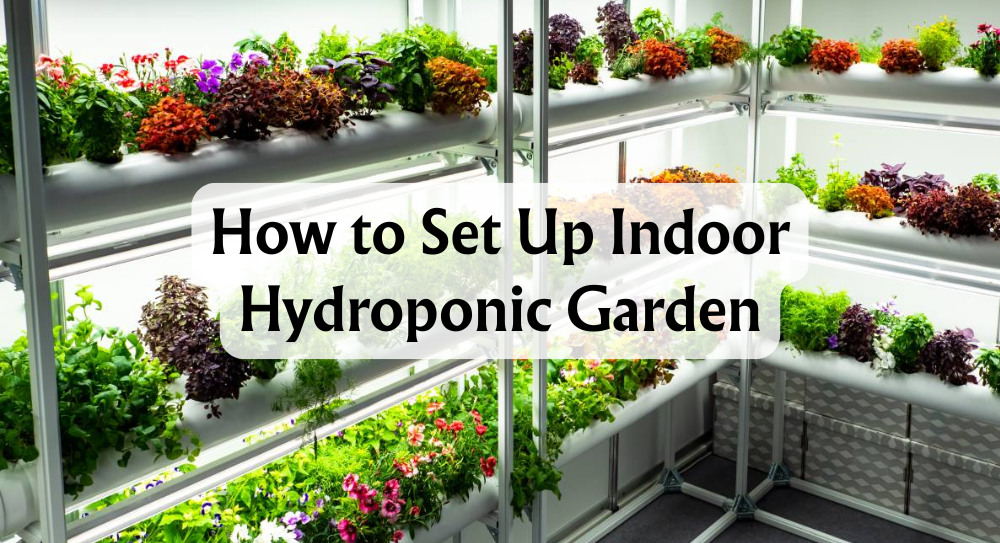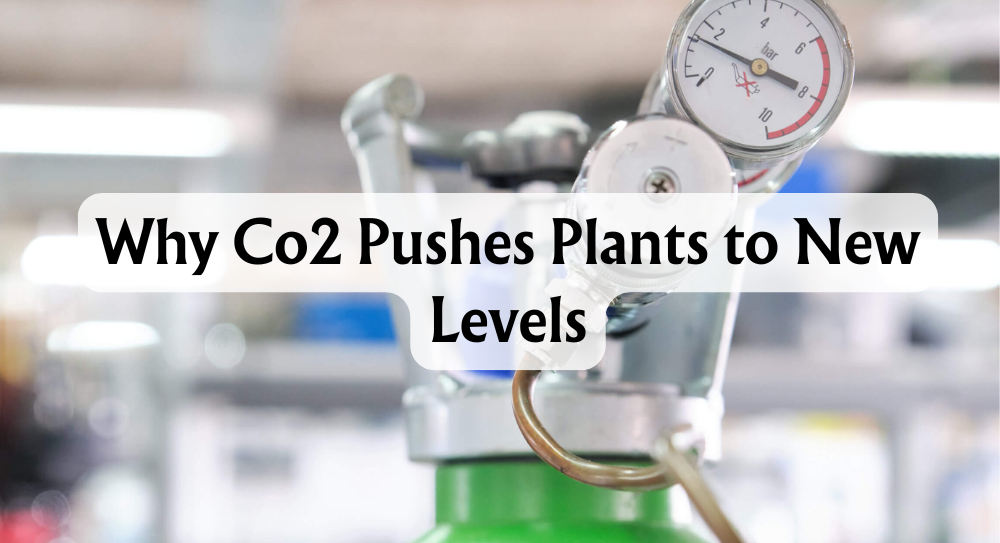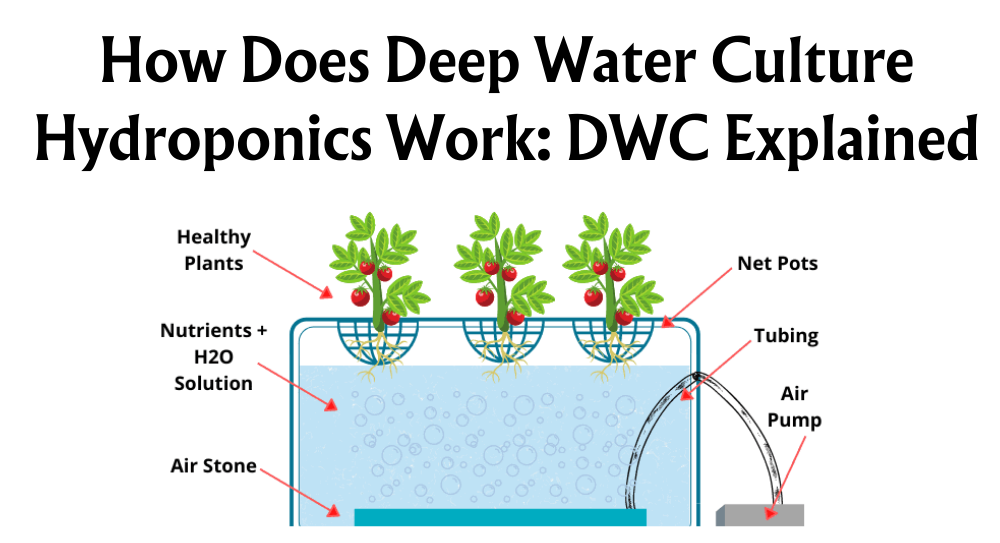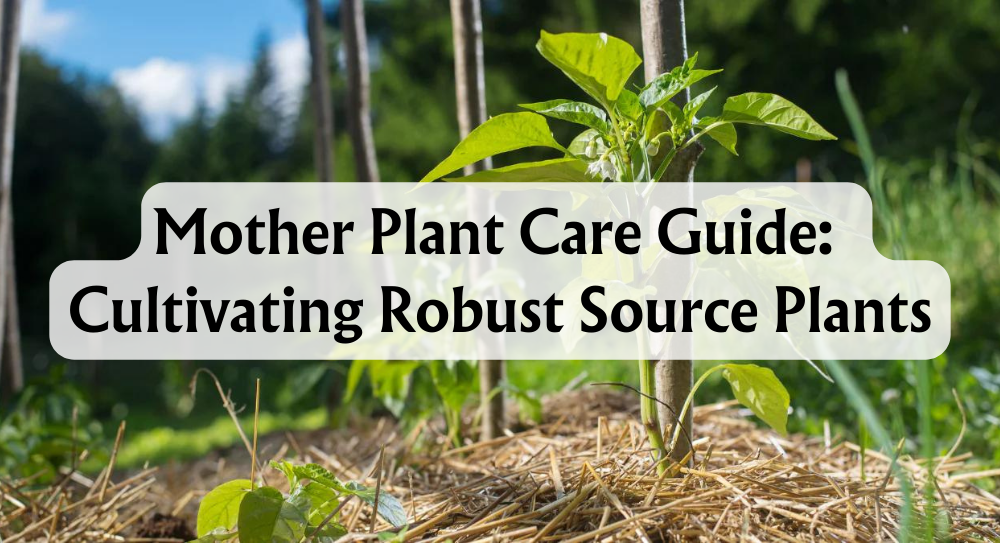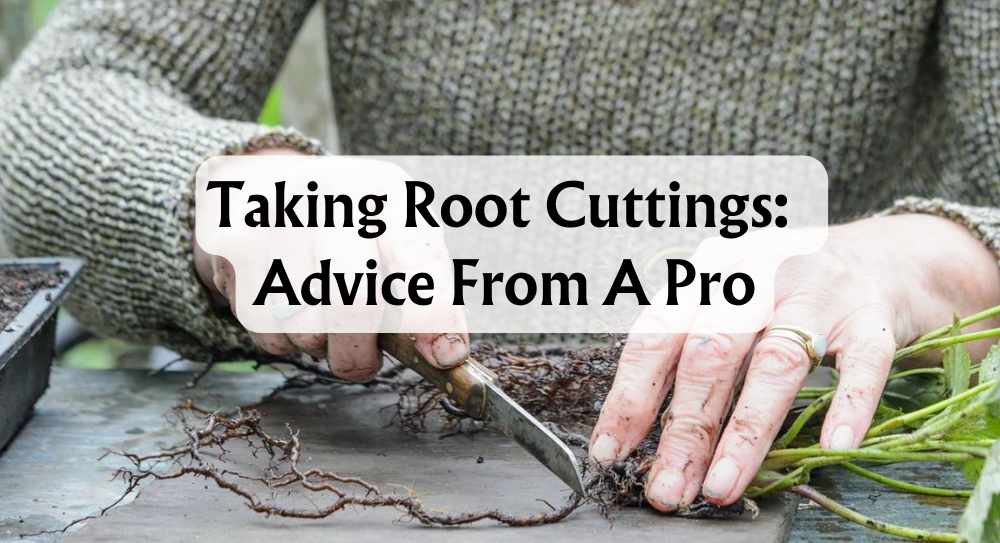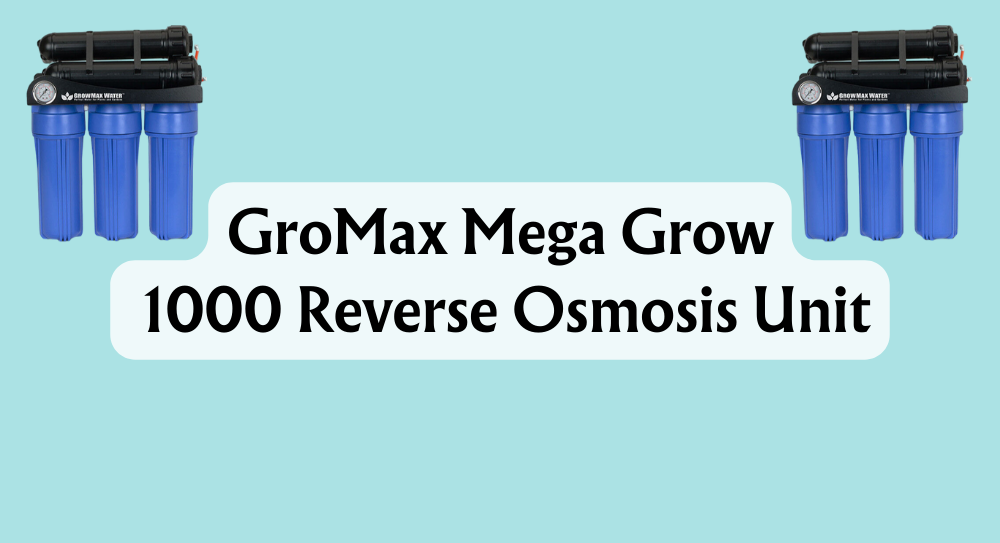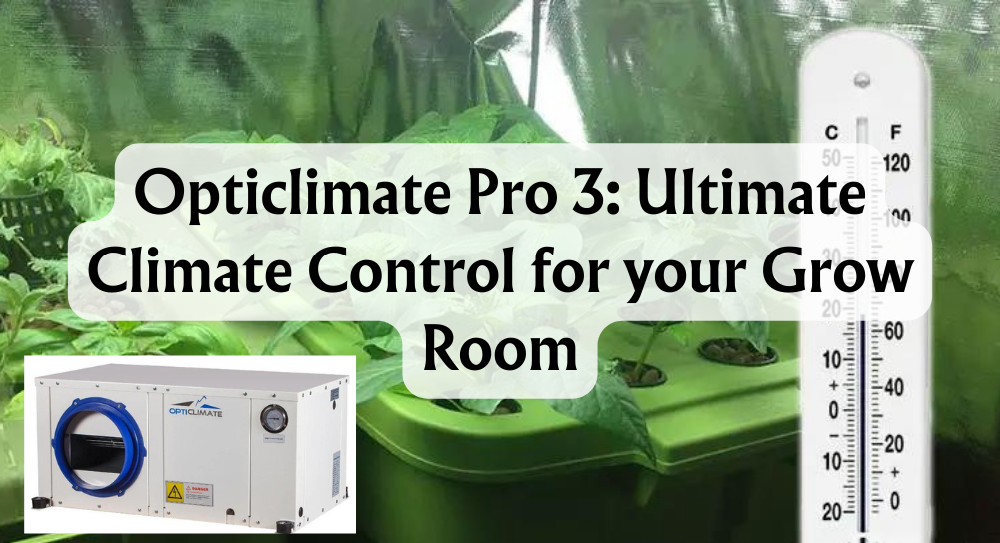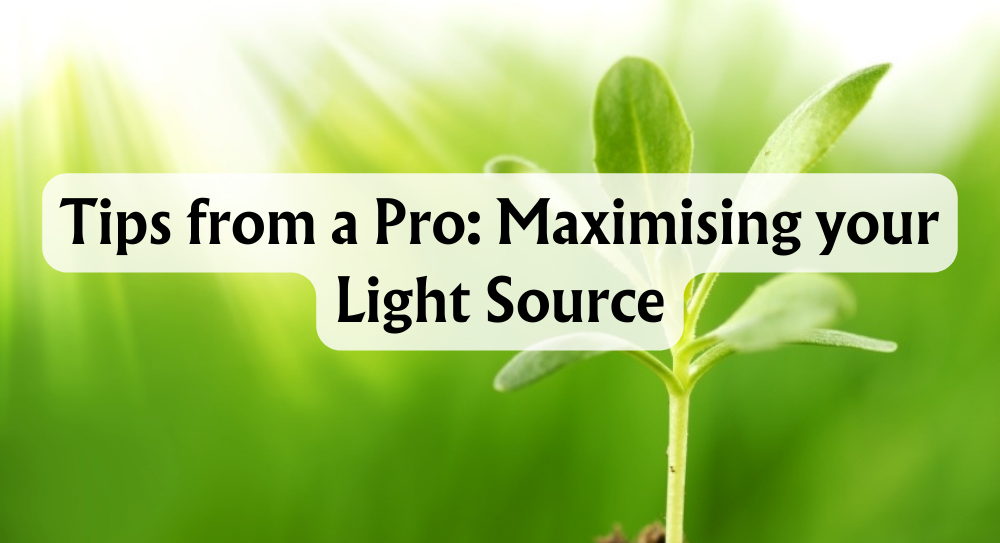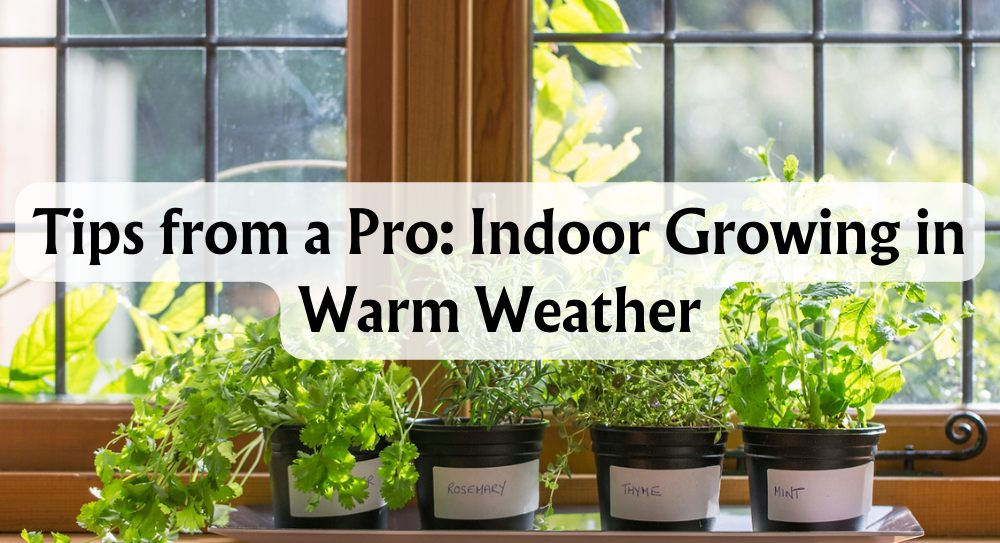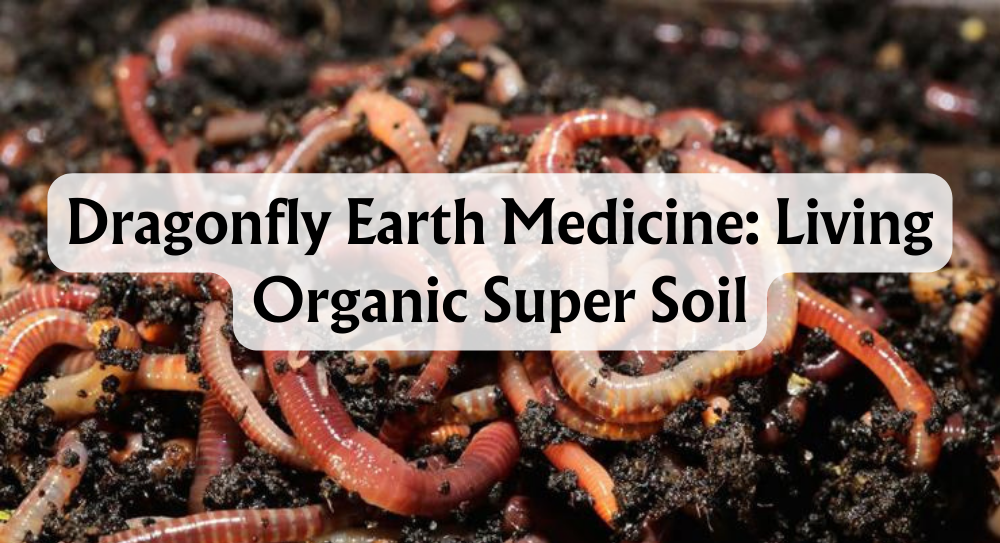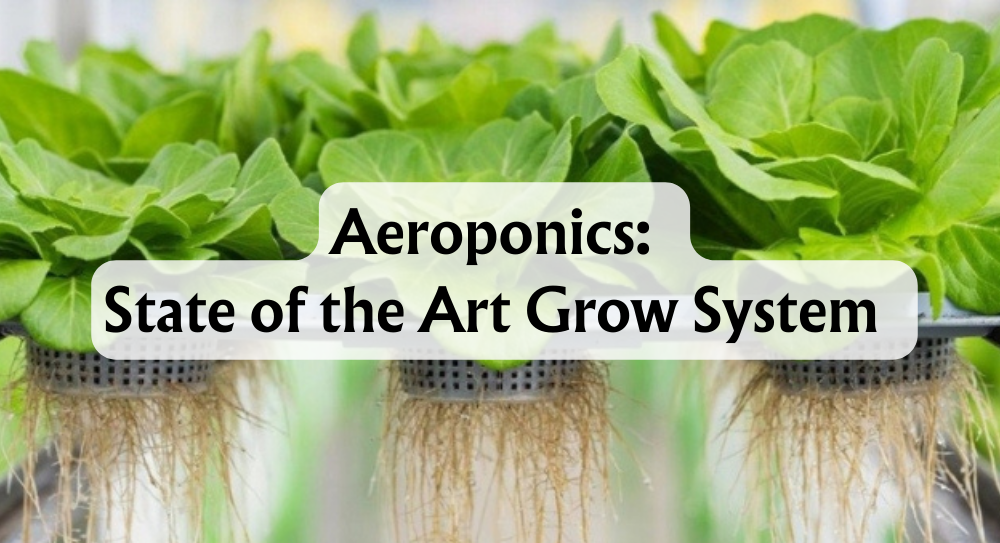How to Keep Hydroponics in Winter
As we embrace the chill of winter, have you found yourself worried about your hydroponic setup? Hydroponics, is our way of growing plants without soil, using a nutrient-rich water solution instead. The advantages for the yield to come and the grower are numerous. We’re talking about faster growth, impressive yields, and snazzy control over the environment. The catch, however, is keeping our green pals toasty during the frosty season.
Cold temperatures are like the uninvited guests at the party for our indoor garden. They can throw a spanner in the works, stunting growth and inviting a host of problems. That's why we have to slip on our gardening gloves and take charge to keep our plants’ roots as cosy as possible. In this article, we’re unpacking the golden nuggets of wisdom on regulating temperature, insulating our green haven, and using artificial lighting to mimic a warm summer’s day. Think of it as wrapping your grow environment in a snuggly blanket.
Right, so you’re all set to preserve that lush, verdant vibe in your home, even when it's snowing outside? We'll explore the delicate dance between plant growth and temperature, reveal the sneaky ways cold can catch plants off-guard, and share top-notch strategies to keep your hydroponic setup warm and welcoming.
Key Takeaways
- Hydroponics is a soil-free indoor gardening method that can increase yields and conserve water, but it needs warmth in winter.
- Plants chill out too much in cold temperatures, affecting their growth and health, which highlights the importance of a warm growing environment.
- Wrap your garden in warmth through insulation, temperature control, and lighting to maintain a balmy grow space during colder months.
Plant Growth and Temperature

We need to understand how temperature plays a role in the well-being of our hydroponic plants during winter—after all, we're after that lush growth, aren't we?
Temperatures—too high or too low—can be the make-or-break factor in your hydroponic garden. Plants have this remarkable thing called an optimal temperature range that keeps their metabolic processes, such as photosynthesis and respiration, in tip-top shape. Stray from this range, and you might see stressed-out plants that are more susceptible to disease and pests.
Let's chat about some common hydroponic favourites. For instance, lettuce loves basking in a cool 18-24°C, while tomatoes prefer it slightly warmer at 21-27°C. And basil? It's happiest at 20-25°C. Just like us, plants have their preferences!
Table: Optimal Temperature Ranges for Hydroponic Crops
| Crop | Optimal Temperature Range |
|---|---|
| Lettuce | 18-24°C |
| Tomatoes | 21-27°C |
| Basil | 20-25°C |
But why fret over the temperature? Well, if our plants get chilly, their ability to take up nutrients wanes and the oxygen levels in their watery homes can plummet. Not only that, but cold weather could invite some unwelcome fungal gatecrashers, making our leafy friends ill.
In a grow room, keeping a steady temperature is like throwing a blanket around our plants. Insulation keeps the heat from sneaking out, and indoor heating systems give us control over those nippy frosty disruptions. Remember, a steady temperature today means robust growth for our plants tomorrow!
Temperature fluctuations cause stress, throw the growth cycle off balance, and attract pesky bugs and diseases like uninvited guests to a garden party. So let’s get our indoor heating systems tuned, our grow rooms snug with insulation, and our watchful eyes on temperature control. Keeping the chill at bay means our plant's energy stays where it should—focusing on growing up strong and healthy.
What Cold Temperatures Can Do to Plants
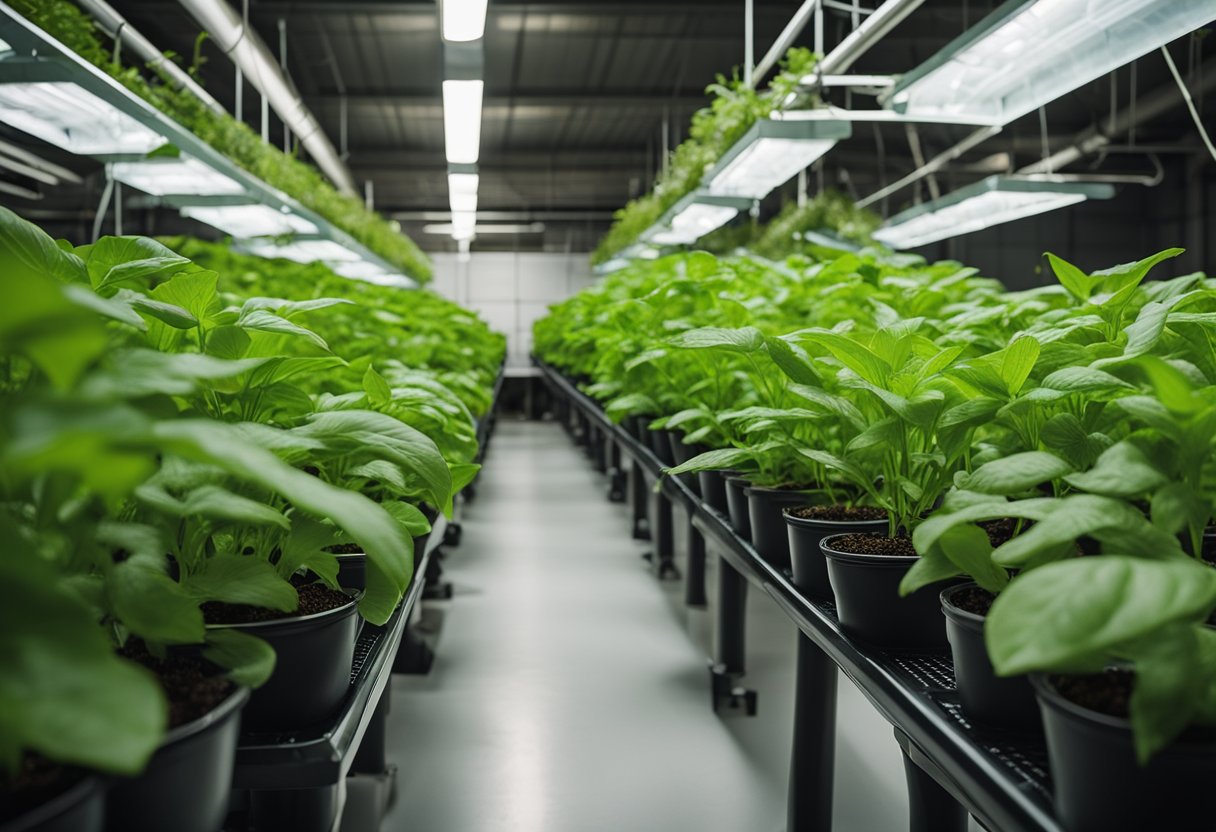
Winter is coming—or perhaps it's already here—and for us hydroponic enthusiasts, understanding the effects of cold on our leafy friends is vital. Even indoors, frost can pack quite a punch, and cold weather doesn't play nicely with our plants' growth cycles.
Signs of Cold Stress or Damage:
- Wilted plants, looking like they've lost the will to stand tall
- Discolouration, like they're auditioning for a role in a plant-based zombie flick
- Stunted growth, as if someone hit the pause button on their development
- Reduced yield that makes our harvests look rather sad
- Leaf curling, turning your plants into unwilling contortionists
- Necrosis, which is as ominous as it sounds—dead plant tissue, folks
Affected Crops and Their Woes:
- Lettuce: might sport unappealing brown spots on its leaves, akin to tip burn.
- Tomatoes: could suffer from a cosmetic nightmare with cracked skin or the dreaded blossom end rot.
- Basil: may look poorly with black spots or alarming yellowing leaves.
Why Do Plants Despise the Cold?
- Their water uptake slows down because chillier root zones make for sluggish roots.
- Nutrient transport takes a hit with colder solutions, leading to nutrient-starved plants.
- Oxygen becomes scarce in chilly nutrient solutions; plants need their O2, just like us!
- Metabolic activities drop as enzymes and membranes decide it's too cold to function.
- Oxidative stress, caused by a reactive oxygen species party nobody invited plants to.
- Cells can get damaged from unwanted ice-crystal invasions and dehydration.
How to Keep Your Grow Room Warm
As winter is coming, maintaining a warm environment for our hydroponic systems becomes crucial. Keeping temperatures consistent ensures the health and productivity of our plants. Let's explore effective ways to manage heat during the colder months.
Temperature Control
Monitoring and adjusting the temperature of our grow room can make or break our winter harvest. Precision is key, and here's how we can achieve it:
- Utilise thermometers and hygrometers: These are essential for checking and recording air temperature and humidity levels. It helps us keep track of the grow room's climate.
- Implement thermostats and timers: Attach these to our heating and cooling devices to regulate the environment automatically.
- Deploy water heaters or chillers: They are indispensable for keeping the nutrient solution at an optimal temperature. Those on a healthier budget may even consider a humidifier.
- Incorporate aerators and pumps: Boosting oxygen content and circulation in the nutrient solution prevents root diseases and encourages healthy growth.
Insulation
A well-insulated grow space retains heat and saves energy. Let's consider several methods:
- Reflective materials: Mylar or bubble wrap attached to walls, ceiling, and floor can reflect heat back into the room.
- Fill gaps with insulation materials: Foam boards or polystyrene can be used to plug any crevices where heat could escape.
- Block out the cold: Curtains or blinds on windows prevent drafts and light leaks.
- Floor insulation: Placing rugs or mats can minimise cold transfer from the floor to the plant pots.
Lighting
Our choice of lighting not only influences plant growth but can also add warmth. Selecting the right lighting system can serve dual purposes:
- Choose an appropriate lighting type: LED, HID, or fluorescent lights cater to plant needs and contribute some heat.
- Tailor light to plant requirements: Different species require varying light colours, intensities, and durations.
- Optimise light distribution: Use light movers, reflectors, or hoods to ensure light reaches all plants evenly without causing excess heat.
- Regulate light-induced heat: While light provides some warmth, too much heat can stress our plants, so finding a balance is essential.
By keeping these tips in mind and adjusting our strategies to fit the specifics of our hydroponic garden, you'll be well on your way to keep your plants warm this winter.
Garden Management in Cold Climates
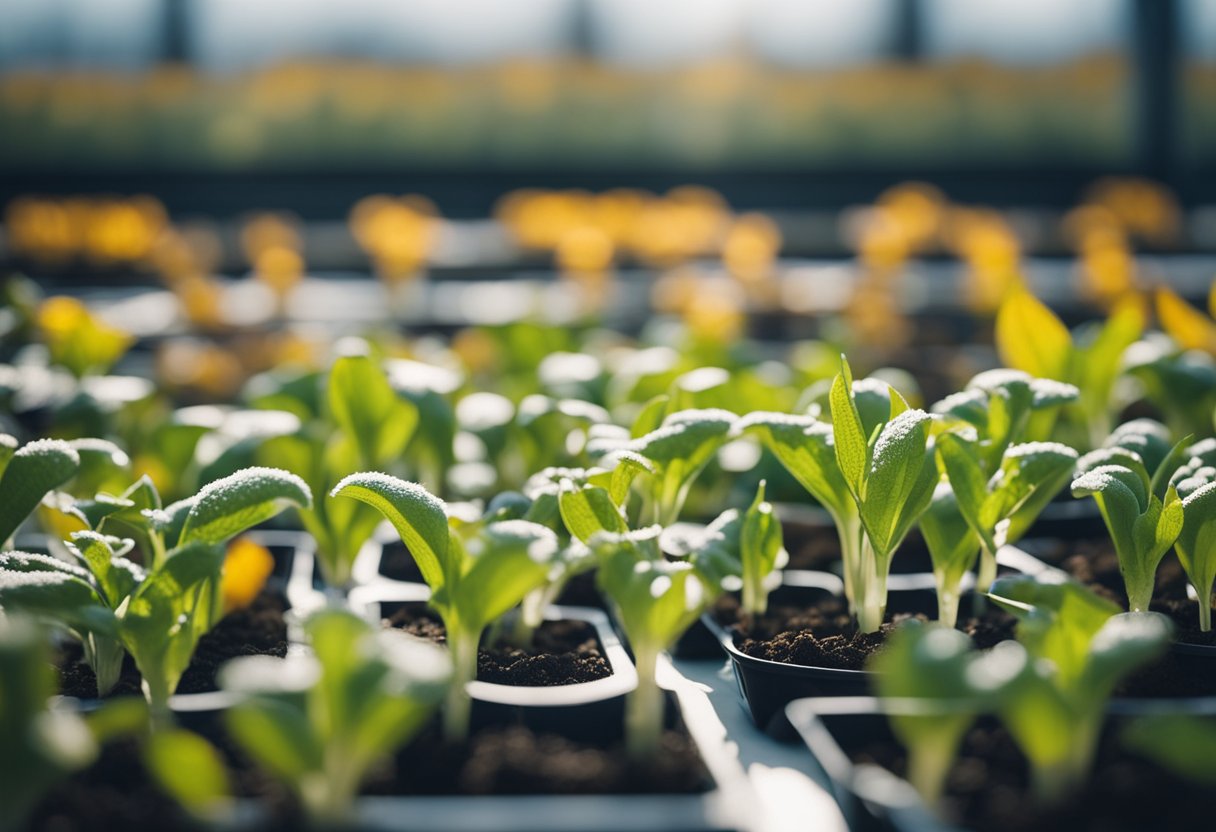
Winter can pose unique challenges to our hydroponic gardens, but with the right strategies, we can keep our plants thriving. Here, we'll focus on overcoming harsh conditions and selecting the best crops for successful cold-weather hydroponics.
Overcoming Winter Challenges
Are you worried that the cold will freeze the fruits of your labour? Fear not! Temperature control is crucial; we can't let our tropical dreams ice over. Insulation is the gardener's thick woolly jumper—it keeps warmth cuddled around the garden. Line those indoor walls with reflective insulation to trap the precious heat. It's a snug blanket for your plants and wallet, with energy costs better contained. And what about lights? Think of them as mini suns; not only do they offer life-giving light, but they also contribute to the warmth. Just remember, like a cosy fire, you want to keep that heat in.
And here's a nifty trick: because cold water holds more oxygen, and we don't want our roots gasping for air, ensure the temperature of the water is well-managed. Warm it just enough during those frosty days.
Choosing Suitable Crops for Lower Temperatures
Considering which crops to give a winter home to? Let's talk about the cool kids of the winter hydroponic scene. Spinach, lettuce, and kale don't just wear ice like a fashion statement; these leafy greens thrive in the chill. They're not alone; many herbs, such as oregano, dill, and mint, are more than happy to sprout in cooler setups.
Here’s a handy list of some winter favourites:
- Spinach: Hardy and happy in the cold.
- Lettuce: Crisp and cool, perfect for the chill.
- Kale: Chuck on the frost; it'll only get tastier.
- Herbs to savour:
- Oregano: Embraces the cooler temps like a seasoned pro.
- Dill: Stands tall against the shivers.
- Mint: Its vigour is un-dampened by the cold snap.
When managing our gardens in the cold, we equip ourselves with proper insulation, conscientious temperature control, and a selection of crop varieties that not only endure but prosper in lower temperatures. Now that's how we beat the winter blues in our hydroponic havens!
Harvesting and Yield Maximisation
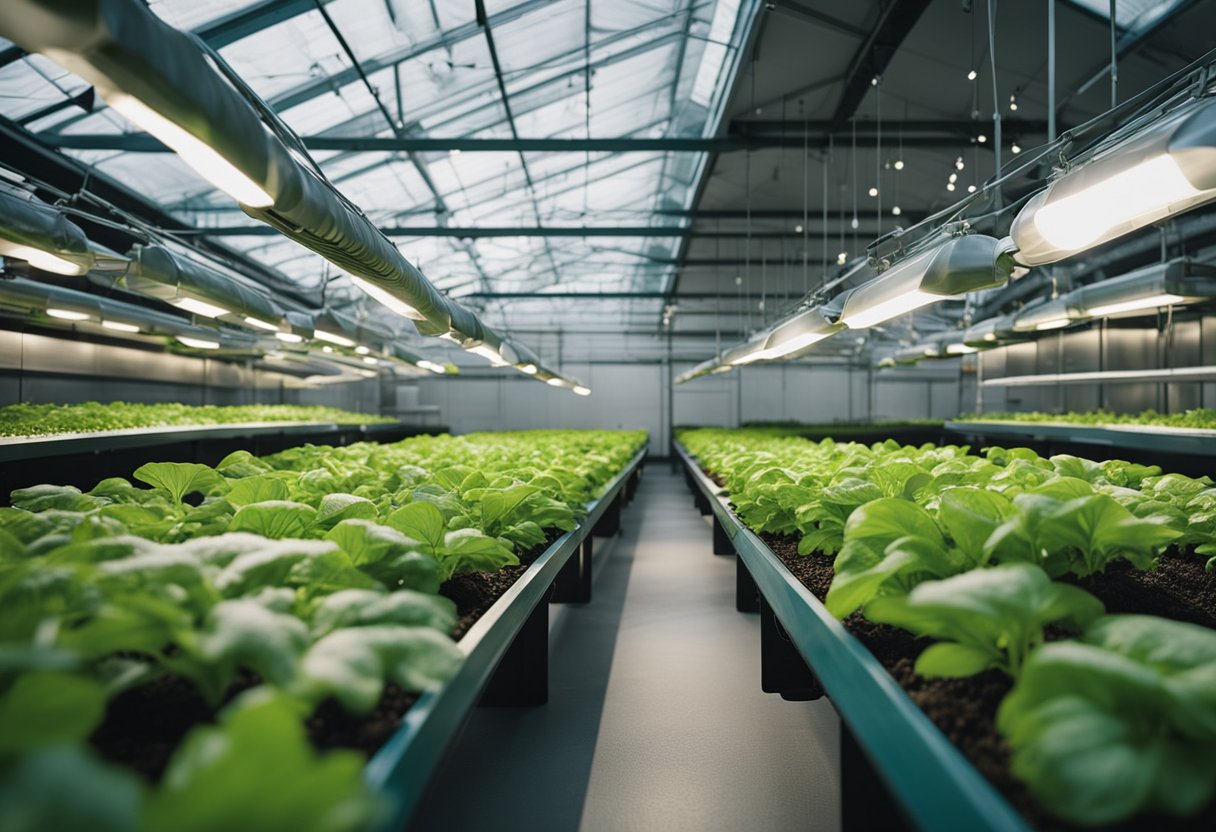
So how do we maximise yield? It's all about the balance of warmth, light, and nutrients. First off, let's make sure our indoor gardens are snug as a bug. Insulation can be our best mate. We can keep our hard-earned heat from vanishing with some proper wrapping up of the space.
Day-to-day Tips:
-
Monitor your temps: Veges are a bit picky with their comfort zone. Keep an eye on the thermometer to ensure they're not too hot under the collar or shivering in the cold.
-
Consistent feeding: Hydroponics is all about that direct nutrient highway to your plants. A regular feeding schedule means no hiccups in growth.
-
Shower them with light: To keep that photosynthesis party going, an ample light supply is key. Think of it as their daily dose of sunshine, even when it's dreary outside.
-
Pollination pals: Some veg, like tomatoes, need a bit of a hand with pollination. A soft brush or a gentle shake of the plant should do the trick.
Weekly To-Dos:
-
Check the pH: Just a quick dip with a pH meter once a week keeps nutrient absorption optimal.
-
Scout for pesky pests: They're easier to manage in small numbers, so keep an eye out!
Harvest Time! When it's time to reap what you sow, do it with care. Harvest regularly to encourage further growth – it's like a green light for your greens to keep producing!
And there you have it! With these tricks up our sleeve, our harvest yields will be as hearty as a winter stew.
Conclusion
In our plunge into winter hydroponics, we've unravelled how plant growth profoundly relies on temperature. Cold snaps can wreak havoc, slowing plant metabolism and halting growth. But, fear not, we've learned to counter this through savvy temperature control, judicious insulation, and smart lighting choices.
We've seen that our green friends thrive in the warmth, so keeping our grow environment toasty is a priority. It’s like wrapping up our plants in a snug blanket of warmth—ensuring they can keep sprouting even when it's bitterly cold outside. Greenhouses come into their own here, acting as guardians against frost with their ability to maintain a stable environment.
By embracing hydroponics, especially in the frosty grips of winter, we gain stellar advantages. Expect:
- Higher yields: Who doesn’t love a bountiful harvest?
- Less water usage: Our hydroponic systems are like a camel, conserving every drop.
- More control: It's like being the conductor of an orchestra, every element in harmony.
Our hydroponic journey doesn’t just brave the winter—it prospers. It's sustainability in action with every growth cycle. Just think, while gardens outside are sleeping, ours remain evergreen... literally!
Remember, these systems are not just about overcoming the chills, they're about thriving through them. Whether you've got a greenhouse or a cosy indoor set-up, our venture into cultivating crops amidst snowflakes showcases the resilience and ingenuity of hydroponics.
Let's keep nurturing our hydroponic havens, ensuring that our leafy charges not only survive but flourish. Together, we'll keep the greenery lush, and our harvests plentiful, all year round.







 Store Locator
Store Locator
